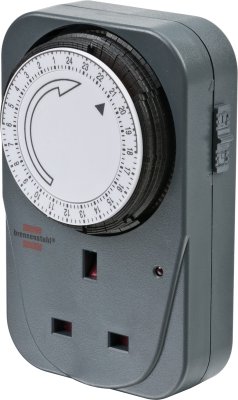
1506453
We use cookies to show you the right content for your language and devices (Necessary), to present content selected for you (Preferences), to analyse traffic to our website (Statistics) and to offer you our best special offers on other websites (Marketing).
By clicking on "ACCEPT", you consent to the use of cookies. You can change or revoke your cookie settings at any time in the footer under "Cookie settings". You can find detailed information in our privacy policy.
These cookies are necessary for the functionality of our website and cannot be deactivated (e.g. session cookies).
These cookies make it possible, among other things, to display your previously viewed articles and to recommend similar articles. Further information can be found in our privacy policy and that of the respective provider;
These cookies help us to understand how visitors interact with our website. The information is collected and analyzed anonymously. Depending on the tool, one or more cookies from the same provider are set. Further information can be found in our privacy policy and that of the respective provider;
We need these cookies to show you our advertising on other websites, for example. If you deactivate them, you will be shown other advertising instead. Further information can be found in our privacy policy and that of the respective provider;
In order to design our website optimally for you and to be able to improve it continuously, we use cookies. By continuing to use the website, you agree to the use of cookies. For more information on cookies, please see our privacy policy.
With brennenstuhl® timers, control units and other electronic devices can be controlled comfortably and conveniently at set times.
Our Primera-Line timers include standard timers and digital week timers for inside and outside.
Whether digital or mechanical, a timer helps you to automate your daily routine and also to save electricity.
Use of a timer allows for the comfortable, automatic control of your electronic devices via the socket. Timers are frequently used as burglary protection. Thanks to their programmable function, the light can be switched on and off in different rooms. As a complementary effect, electronic shutters can be opened or closed at certain times in order to give the impression that someone is in the house.
There are two types of timers, mechanical timers and digital ones.
In most cases, this type of timet has a rotatable ring representing a period of 24 hours - that is why it is also referred to as daily timet.  Consequently, the timer switched on and off every day at the same time. Desired time settings can be made at 15-minute intervals.
Consequently, the timer switched on and off every day at the same time. Desired time settings can be made at 15-minute intervals.
This kind of timer is controlled by means of a computer chip, which allows for settings exact to the minute. Advantage: You can store different times for different days. Thus, the digital timer can also be used as a weekly timer.

A mechanical timer consumes about 1 Watt per hour. That means 24 Watt per day. A digital timer usually consumes a little bit more power. Here, the power consumption is about 2 Watt per hour. This is due to the LCD display.
First of all you should know for which purpose you want to use the timer in order to be able to choose the right one. Some examples are listed in the following:
For circulation pumps, radiators and terrariums, we recommend a mechanical time switch as the focus is on the switching-on and switching-off. For lamps and shutters, however, we recommend a digital timer as you can programme different times for different days.
For the mechanical timer, the ring should be rotated clockwise until the arrow inside the ring points at the current time. In order to be able to set the desired time, the toggle lever on the adjustment ring has to be pushed down.
For the digital timer, there are often different models; however almost every digital timer has a “PRG button” or, alternatively, a “Set button” which can be used for easy programming. For the correct instruction, it would be best to read the individual instruction manuals of the device. 
If you need a timer for outdoors, e.g. for the garden, the terrace or the like, you should choose a switch with at least protection type IP44 (foreign body- and splash water-protected).
If you want a timer for indoor use, protection type IP20 (covered) is absolutely sufficient.